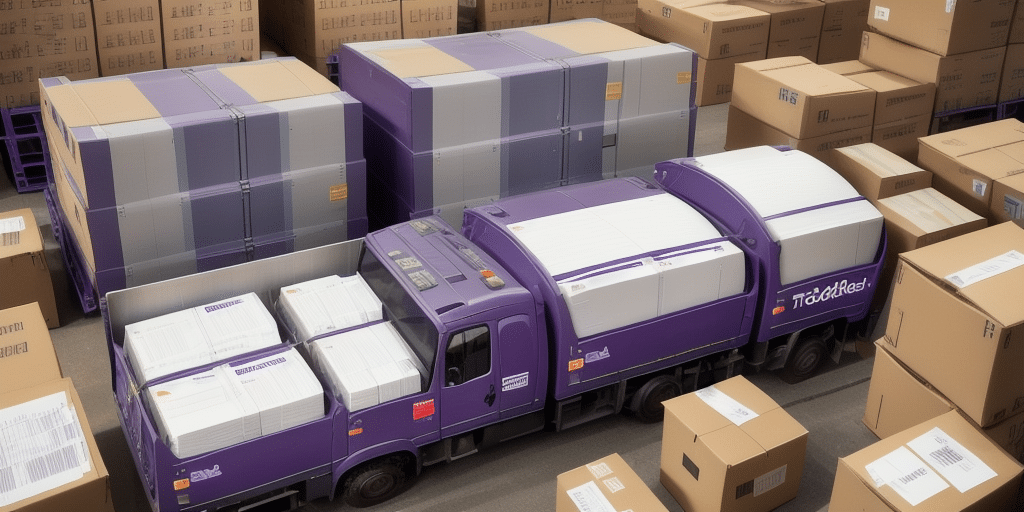If you're in the business of selling glass or ceramic products online, it's essential to have an effective inventory management system in place. An inventory management system can streamline your business operations, help you keep track of your stock levels, and ensure that you always have the products your customers are looking for. In this article, we'll be looking at the top 10 inventory management systems available for glass and ceramics e-commerce businesses, and we'll be discussing the key features you should look for when choosing an inventory management system for your business.
Why Effective Inventory Management is Critical for Glass and Ceramics E-Commerce Businesses
Effective inventory management is critical for glass and ceramics e-commerce businesses because it ensures that you always have the products your customers are looking for in stock. With an inventory management system, you can keep track of your stock levels, track sales trends, and make informed decisions about when to reorder products. This helps you avoid stockouts and ensure that you're always able to meet your customers' needs.
Another reason why effective inventory management is crucial for glass and ceramics e-commerce businesses is that it helps you optimize your cash flow. By keeping track of your inventory levels and sales trends, you can avoid overstocking on products that aren't selling well and invest your money in products that are in high demand. This helps you maximize your profits and minimize your losses.
Furthermore, effective inventory management can also help you improve your customer service. When you have the products your customers are looking for in stock, you can fulfill their orders quickly and efficiently. This leads to higher customer satisfaction and can help you build a loyal customer base. On the other hand, if you frequently run out of stock, you risk losing customers to your competitors who are better equipped to meet their needs.
How Inventory Management Systems Can Streamline Your Business Operations
Inventory management systems can streamline your business operations by automating many of your inventory-related tasks. With an inventory management system, you can set up automatic reorder triggers, receive alerts when you're running low on stock, and track your sales trends in real-time. This frees up your time to focus on other aspects of your business, such as marketing and customer service.
In addition to these benefits, inventory management systems can also help you reduce the risk of overstocking or understocking. By having a clear view of your inventory levels and sales trends, you can make informed decisions about when to order more stock and how much to order. This can help you avoid tying up too much capital in excess inventory or losing sales due to stockouts.
Key Features to Look for in an Inventory Management System for Glass and Ceramics E-Commerce
When choosing an inventory management system for your glass or ceramics e-commerce business, there are several key features you should look for. These include:
- Real-time inventory tracking
- Automatic reorder triggers
- Sales tracking and reporting
- Integration with your e-commerce platform
- Barcode scanning capabilities
However, there are additional features that can greatly benefit your business. One of these is batch tracking, which allows you to track the movement of a specific group of products. This is especially useful for glass and ceramics, as it allows you to trace the origin of any defects or issues that may arise.
Another important feature to consider is the ability to set different access levels for your team members. This ensures that only authorized personnel can access sensitive information, such as inventory levels and sales data. This can help prevent errors and improve security within your business.
Understanding the Different Types of Inventory Management Systems Available
There are several different types of inventory management systems available for glass and ceramics e-commerce businesses. These include:
- Cloud-based inventory management systems
- On-premise inventory management systems
- Open-source inventory management systems
Cloud-based inventory management systems are hosted on remote servers and accessed through a web browser, while on-premise inventory management systems are installed on local servers and accessed through a network. Open-source inventory management systems are free to download and use, but require technical expertise to set up and maintain.
It is important to consider the specific needs of your glass and ceramics e-commerce business when choosing an inventory management system. For example, if you have a large inventory and need to access it from multiple locations, a cloud-based system may be the best option. On the other hand, if you have sensitive data that needs to be kept on-site, an on-premise system may be more suitable. Additionally, if you have a small budget and technical expertise, an open-source system may be a good choice. It is important to research and compare different systems before making a decision.
Comparing the Pros and Cons of Each Inventory Management System on the List
When comparing the pros and cons of each inventory management system on the list, it's important to consider your specific business needs. Cloud-based inventory management systems offer flexibility and scalability, but may require a monthly subscription fee. On-premise inventory management systems offer greater control over your data, but may require a larger upfront investment. Open-source inventory management systems are free to use, but may require technical expertise to set up and maintain.
Another important factor to consider when comparing inventory management systems is the level of automation they offer. Some systems may have advanced automation features, such as automatic reordering when inventory levels reach a certain threshold, while others may require manual input for every transaction. Additionally, it's important to consider the level of integration with other systems, such as accounting software or e-commerce platforms, as this can greatly streamline your business operations.
How to Choose the Right Inventory Management System for Your Business Needs
When choosing the right inventory management system for your business needs, it's important to consider factors such as your budget, your business size, and your technical expertise. Cloud-based inventory management systems are a good choice for small to mid-sized businesses with limited IT resources, while on-premise inventory management systems may be a better choice for larger businesses with more complex inventory needs. Open-source inventory management systems are a good choice for businesses with technical expertise and the ability to customize their own solution.
Another important factor to consider when choosing an inventory management system is the level of automation you require. Some systems offer automated inventory tracking and ordering, while others require manual input. If you have a high volume of inventory and need to track it in real-time, an automated system may be the best choice for your business. However, if you have a smaller inventory and prefer a more hands-on approach, a manual system may be sufficient.
Best Practices for Implementing an Inventory Management System in Your Glass or Ceramics E-Commerce Business
When implementing an inventory management system in your glass or ceramics e-commerce business, it's important to follow best practices to ensure a successful implementation. These include:
- Define your inventory management goals and objectives
- Train your staff on the new system
- Test the system thoroughly before going live
- Monitor your inventory levels and adjust your system as needed
Another important best practice to consider is to choose an inventory management system that integrates with your e-commerce platform. This will allow for seamless communication between your inventory and sales data, reducing the risk of overselling or stockouts.
It's also recommended to regularly review and analyze your inventory data to identify trends and make informed decisions about purchasing and stocking levels. This can help optimize your inventory management system and improve overall business performance.
Case Studies: Real-Life Examples of Successful Inventory Management Implementation
Real-life case studies provide valuable insights into how other businesses have successfully implemented inventory management systems in their glass or ceramics e-commerce business. These case studies can help you identify best practices and avoid common pitfalls when implementing your own system.
One example of a successful inventory management implementation is a ceramics business that was struggling to keep track of their stock levels and frequently ran out of popular items. After implementing an inventory management system, they were able to accurately track their inventory levels and reorder products in a timely manner. This resulted in increased customer satisfaction and higher sales.
Another case study involves a glass e-commerce business that was experiencing high levels of product waste due to overstocking and poor inventory management. By implementing a system that allowed them to track their inventory levels in real-time and adjust their ordering accordingly, they were able to significantly reduce their waste and improve their profitability.
The Future of Glass and Ceramics E-Commerce: Trends in Inventory Management Systems
As the world becomes increasingly digitized, we can expect to see more advances in inventory management systems for glass and ceramics e-commerce businesses. Some of the trends we're seeing include the use of AI and machine learning to predict demand and optimize inventory levels, as well as the integration of inventory management systems with other business software such as accounting and CRM systems.
Overall, choosing the right inventory management system for your glass or ceramics e-commerce business is critical to your success. By understanding the key features to look for, the different types of inventory management systems available, and best practices for implementation, you can ensure that you have the tools you need to keep your inventory under control and meet your customers' needs.
One of the challenges that glass and ceramics e-commerce businesses face is the fragility of their products during shipping. To address this issue, some inventory management systems are incorporating features such as real-time tracking and monitoring of shipments, as well as automated alerts for any potential damage or delays. These features not only help to ensure that products arrive safely and on time, but also provide valuable data for improving the shipping process and customer satisfaction.









